Summary, abstract and full texts No. 101
Dossier: Quelle pédagogie, pour quelle(s) mémoire(s) ?
Coordinated by Philippe Mesnard and Yannis Thanassekos
Philippe Mesnard and Yannis Thanassekos: Editorial(pdf in French)(pdf in Dutch)
Sophie Ernst: Transmission de masse et pédagogie de la Shoah : nouveaux enjeux (pdf)
- Now that the memory of the Shoah has become central to our culture, the question of the policy educational institutions should adopt to teach younger generations about it arises. However, discussion on education is obsessed by quite different issues, notably social justice or structural reforms. This is why remembrance associations and memorial museums have played a pioneering role in Shoah education rather than schools, which must nevertheless now assume their responsibilities independently. In particular, they must re-evaluate the teaching techniques which have been formed without debate, and which can be questioned by going back to the turning point in the 1990’s when mass transmission began, with all its inherent risks. Certain methods have established themselves as the "right ways", such as testimony in class, visits to Auschwitz and identification with the young victims. What presuppositions underlie these methods, and what effects do they really have? It is time to start re-considering whether the methods achieve the goals sought, and to develop new forms of training teachers which involve them more directly and include discussion of the basic problems.
- This article reports on an investigation among Swiss teachers into the conditions for transmitting the history and remembrance of the Shoah, starting from questions on methods of teaching history and social representations. Based on conversational interviews, it shows that teachers set themselves high standards and are ready to make comparisons with other genocides, but without always linking their practices to research findings.
- In July 2008 the sixth international conference on the teaching of the Shoah was held at Yad Vashem (Israel). English-speakers, Spanish-speakers and Eastern European countries were strongly represented. These last countries view the teaching of the Shoah as a key element of democratisation. During this vast event a double tendency emerged: on the one hand the assertion of a political statement re-affirming the link between Israel and perpetuating remembrance of the Shoah; on the other, a strong universalist orientation.
Jean-François Forges: La mise en place de l'enseignement de la Shoah en Espagne, à Madrid (pdf)
- Since the Spanish government accepted the need for teaching on the Shoah in 2006, many ceremonies and conferences, involving historians, lawyers and former deportees, sometimes with the King himself present, have sought to restore Spanish Jews to their place in history. The introduction of the Shoah in the school curriculum at the historical and moral level has been accompanied by intense theoretical reflection, and the first didactic and historical visits to the sites of Shoah remembrance in Europe have been organised.
Jesus Alonso Carballès: Le bombardement de Guernica dans les manuels d'histoire de l'enseignement secondaire en France (1946-2006)
- School textbooks are indispensable tools for transmitting history and remembrance to every generation of young pupils. This article examines the place given to the bombing of Guernica in French secondary education by analysing 27 textbooks published from the end of the Second World War to 2006.
Frediano Sessi: Éléments pour une réflexion sur la présence de la Shoah dans les écoles italiennes
- In the 1980’s very few Italian universities offered courses on the extermination of the Jews, nazism and fascism in their contemporary history programmes. Not until 1996 was the history of the twentieth century introduced in Italian school curricula. But in 2000 a "day of remembrance" was established by law, and since then there has been a disproportionate growth in initiatives, activities and remembrance projects.
- This text examines how Belgian contemporary documentary approaches Shoah’s pedagogy. What has recently changed is in the way didactic films communicate the memory of the war to young people. Focusing on a recent documentary, Modus Operandi, which saw its debut in March 2008, this paper analyses the changes that have taken place, regarding both the historical approach to the event and the cinematographic modes of representation of the history of the genocide. First, the film assumes a national perspective on the event and thus concentrates on the process that led to the extermination rather than on the memory of the camp’s survivors. And, aside from merely communicating historical knowledge, the film leads the viewer to reflect on the process of the writing of history. Finally, the film moves away from what is sometimes referred to as "shock therapy", i.e. the exposure of young people to horrific images, since that filmic strategy is considered as harmful to young people.
- In France and elsewhere, the way in which the Shoah is taught today has brought to light weaknesses in the way that educational institutions carry out their mission of transmission. Progress in academic knowledge, which is now linked to approaching the Shoah in terms of definition, classification and comparison, supports a certain number of unfamiliar ideas.
- The transmission of the remembrance of "Auschwitz" is not the transmission of something that is already given. It presupposes the elaboration of the sense and the signification of what should be transmitted. Rare are the subjects of history that show such a gap between, on one hand, the demands of a comprehension that does not sacrifice to complexity (the duty of history) and, on the other hand, the constraints and limits inherent in all pedagogy (the duty of remembrance). How to surmount the difficulties without using dangerous simplifications or mystifications? From the educative point of view, the experience of Auschwitz has only real sense if it gives access to a critique of the present without concessions.
Other subjects
Elisabetta Ruffini & Sandro Scarrocchia: Auschwitz, Bloc 21. L’histoire d'un mémorial à défendre
- Unlike the other national pavilions on the site of Auschwitz I, the pavilion which, after long years of gestation, Italy established in 1980, is based on a work of art, as it had been decided to avoid a documentary-type approach. Some of the great names of twentieth-century Italian culture contributed to the work: Lodovico Belgiojoso and the BBPR studio, Nelo Risi and Mario Samonà, Primo Levi and Luigi Nono. But this pavilion, long neglected, now risks being made to resemble the other national pavilions. This would destroy its artistic dimension, replacing it with a memorial arrangement based on documentation, not the creative imagination.
- Acknowledging that genocide is not yet a thing of the past, and with reference to the Holocaust and the 1994 Rwandan genocide, this research examines the extent to which sociological explanations of acts of genocide have a common basis. To this end it compares the assertions of "intentionalists" and "functionalists". Despite assertions that there is no common basis which might indicate the possibility of acts of genocide, this study suggests that recurrent elements are present in the various explanations of the Holocaust and the Rwandan genocide. As the study examines only two genocides, further research into the validity of this finding will be needed before these conclusions can be generalised.
- In May 1941 a strike broke out in the Nord-Pas-de-Calais mining basin, a "zone attached" to the Militärbefehlshaber in Belgien und Nordfrankreich, depriving France and the occupant of important economic resources. The social movement, supported by the clandestine Communist Party triggered brutal repression. The Vichy authorities’ inability to restore order led to the intervention of the Oberfeldkommandantur 670 of Lille, which undertook repressive action based on martial law and the internment of the agitators in Belgium. The breach of the German-Soviet pact in June 1941 contributed to an ideological shift in the perception of the agitators and ended in the formation of a convoy of deportees to Sachsenhausen. This placed the North French miners at the heart of the mutations of the camp system. Even after they were deported inside the Reich the process of repression continued, casting light on the practices of the German authorities and the issues arising between them.
The journal is available on line at
openedition.org
All issues
-
No. 138 (04/2024) Trials
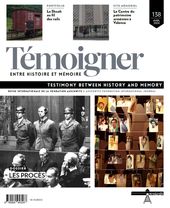
This dossier will deal with trials that have provided a legal answer to a demand for justice. Several cases will be addressed ranging from Istanbul and the Nuremberg Doctors' trial to the German policemen of the Brussels Jewish section and the gacaca trials in Rwanda.
Table of contents (Dutch version)
Table of contents (French version)No. 137 (10/2023) Children's Literature in Light of the Holocaust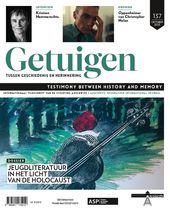
In France and Belgium, research into the relationship between children's literature and the Holocaust is rare, in contrast to the phenomenal attention in America (everyone knows Art Spiegelman's Maus) and in other English-speaking countries. Yet children's books depicting the Holocaust in words and pictures have been steadily gaining ground in post-war France and Belgium. While literary criticism and research still seem to be in their infancy, this dossier will show that critical analysis of this corpus is highly relevant for the future.
Table of contents (Dutch version)
Table of contents (French version)No. 136 (04/2023) The Executioners
The executioner has always fascinated and frightened. The perpetrators of mass crimes are those who carry out, facilitate or order the annihilation of a specific group. Issue 100 of Testimony: Between History and Memory, published in September 2008, examined the Nazi executioners. This dossier offers readers a historical and criminological approach to other genocides of the 20th century.
Table of contents (Dutch version)
Table of contents (French version)No. 135 (10/2022) Disobedience
This issue looks at the concept of disobedience in wartime. While the concept of civil disobedience may seem familiar in these times of endemic protest, there was a time when obedience was the rule. In a military context, disobedience was frequently followed by deadly consequences. This dossier focuses on three cases from the First World War and one from the Algerian War (1954-1962).
Table of contents (Dutch version)
Table of contents (French version)No. 134 (04/2022) The Killing of the ‘Useless’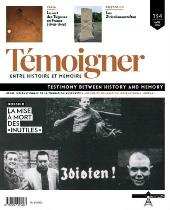
During the Second World War, the Nazi regime didn't just try to destroy the Jewish "race", which it considered dangerous. Before implementing the Final Solution, the Nazis massacred those who didn't fit in with their eugenic racial ideology and whom they considered inferior. In this dossier, we focus on the mentally and physically handicapped, systematic victims of Nazi pseudo-medical madness throughout the world conflict.
Table of contents (Dutch version)
Table of contents (French version)No. 133 (10/2021) 1918-1938: The politicisation of music in Europe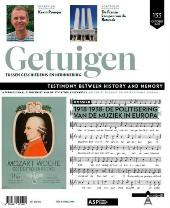
1918-1938: The politicisation of music in Europe
This dossier looks at the instrumentalisation of music by the political world between the wars. The cases are numerous and shed light on the way in which political propaganda was propagated in European musical culture.
Table of contents (Dutch version)
Table of contents (French version)No. 132 (04/2021) AKTION REINHARDT and AKTION ERNTEFEST
AKTION REINHARDT and AKTION ERNTEFEST
The Aktion Reinhardt saw approximately 1.8 million Polish Jews perish in the gas chambers of Bełżec, Sobibór, Treblinka and Majdanek between March 1942 and November 1943. The Jews who ‘escaped’ the gas chambers were shot in Majdanek, Trawniki and Poniatowa on 3 and 4 November 1943 during Aktion Erntefest. The dossier we are proposing takes stock of current research on the Aktion Reinhardt. This historical event has experienced a resurgence of interest among historians of the Shoah over the last fifteen years, thanks, among other things, to archaeological advances at the various sites concerned. We have come a long way since Yithzak Arad's pioneering work in 1987: Belzec, Sobibor, Treblinka: the Operation Reinhard Death Camps. The dossier highlights different perspectives to discuss current research related to the issue. It addresses the erasure of traces, the sociological perspectives of the executioners, the excavation of extermination sites and the most recent historiography.
Table of contents and abstracts (Dutch version)
Table of contents and abstracts (French version)No. 131 (10/2020) Historiography of the Second World War in the Far East
Historiography of the Second World War in the Far East
For many people, 8 May 1945 and the surrender of Nazi Germany is the final chapter of the Second World War. However, it is often forgotten that the months between May and September 1945 were decisive for the future of the world, as fierce fighting continued in the Pacific between the United States and the Japanese Empire until the latter’s unconditional surrender on 2 September 1945, the actual date of the end of the Second World War.Table of contents and abstracts (Dutch version)
Table of contents and abstracts (French version)No. 130 (04/2020) Reception of the Shoah and mentalities in Jewish and Christian circles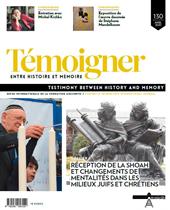
Reception of the Shoah and mentalities in Jewish and Christian circles
The reception of the Shoah has become, for all of humanity, a place of questioning and awareness. This dossier will aim to establish and evaluate the modalities and challenges of the transmission of the Shoah and to measure the resulting changes in identities and mentalities. What were the Catholic views on Judaism before and during the Shoah? What Jewish liturgies and interreligious rites exist for the commemoration of the Shoah in Israel and the United States? The evolution of mentalities in the Jewish world in relation to the Shoah will also be exposed through the analysis of the so-called Bitburg controversy, triggered by the visit of the American President, Ronald Reagan, to the German military cemetery of Bitburg (FRG) in May 1985. The Auschwitz Carmel affair (1985-1993) finally reveals the involvement of the Belgian and French Churches in the resolution of the conflict and is undoubtedly a key stage in the Church's 'teaching of esteem' with regard to the Jews. The historical answers provided in this dossier to the question of the Shoah may be decisive for the survival of Judaism and the relationship between Judaism and Christianity.
Table of contents and abstracts (Dutch version)
Table of contents and abstracts (French version)No. 129 (10/2019) Recognition of victims
Recognition of victims
In recent decades, the idea has gained ground that victims of mass crimes deserve recognition. This has become an essential category of our memorial culture. This dossier aims to take stock of this issue by looking at the broad spectrum of measures to ensure recognition, from simple remembrance to targeted judicial interventions, and by recalling the growing importance of the victim in international criminal justice. It returns to the problematic aspects of recognition when it leads to competition among victims.
Table of contents and abstracts (Dutch version)
Table of contents and abstracts (French version)No. 128 (04/2019) 25 years on, how to remember the Tutsi genocide
Kwibuka [Remember]. 25 years on, how to remember the Tutsi genocide
April 1994. Images of mutilated bodies are projected on European screens, originating from Rwanda. 25 years later, we remember.Table of contents and abstracts (Dutch version)
Table of contents and abstracts (French version)No. 127 (10/2018) Perpetuation of violence after 1918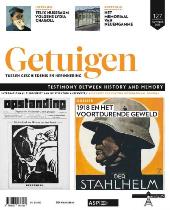
Perpetuation of violence after 1918
One hundred years ago, the First World War ended in November 1918. After four years of bloodshed, peace returns to Europe. At least, that was the impression of the victors at the time, and today it is also the impression of the commemorators who celebrate its centenary. The historical reality is more complex. At least until 1923, violence continued in the form of revolutions and counter-revolutions, wars and civil wars. The spirits also remain in the grip of violence on both the left and the right. The dossier proposes to define the contours of this Europe so strongly marked by the Great War, by evoking the culture of violence established by it and which, finally, degenerated into the total explosion of the Second World War.
No. 126 (04/2018) Questions about the future of remembrance work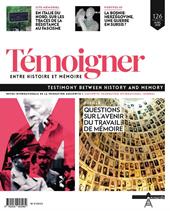
Questions about the future of remembrance work
On 20 and 21 January 2017, the seminar ‘Questions on the future of remembrance work’ was held in Esch-sur-Alzette, Grand Duchy of Luxembourg. The five articles in this dossier taken from the conference proceedings attempt to answer the following questions: How can we build a critical memory of the Shoah, free of myths and national fragmentation? How do we anticipate the absence of direct witnesses? In the future, who transmits what, and how?
No. 125 (10/2017) Persecution of homosexuals by the Nazis
Persecution of homosexuals by the Nazis
Historical knowledge of the Nazi persecution of homosexuals and their deportation has made significant progress in recent years due to the increase in research on the subject. In this dossier, recognised researchers as well as young doctoral and PhD students take the floor. The insights they provide concern both the question of the singular destiny of homosexual men and women during the Second World War and the way in which the memory of the homosexual victims of Nazism has evolved since the end of that war.
No. 124 (04/2017) Music in the camps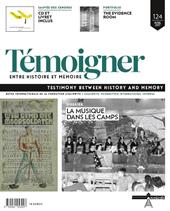
Music in the camps
Music was an integral part of the concentration camp world, Nazi and otherwise. What kind of music was composed and performed, and what exactly was its role in the camps? A factor of survival and resistance for the prisoners, a way for them to express their hope and their humanity - or, on the contrary, an instrument of oppression exploited by the executioners? What is the function of music in the work of memory following the experience of extreme violence and suffering? This dossier proposes to explore these issues.
No. 123 (10/2016) Translating Memory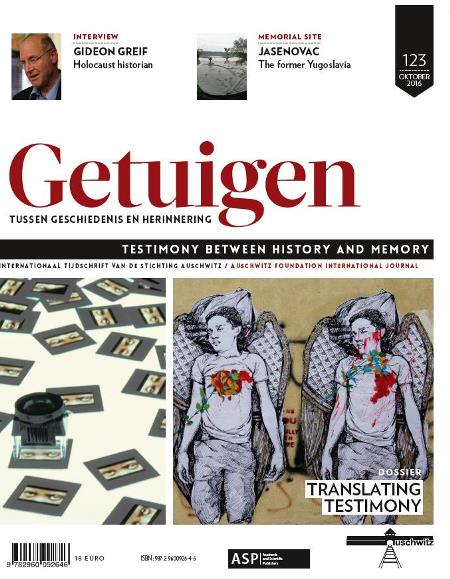
Translating Memory
Presentation of the dossier: What is the relationship between testimony, defined as a more or less ritualized firstperson account of political violence, and translation? Correspondingly, how does the translator position herself towards the witness? Can the translator be, or become, a witness? How, when and why are testimonies translated? Which linguistic and discursive strategies do translators resort to when faced with ethically challenging texts? Which role do they play exactly in the transmission of the historical knowledge, cultural values or social critique conveyed by the testimony? Does translation weaken or rather reinforce the relevance and impact of the original statement? How important is translation in literary, political and institutional settings? Do these specific settings determine translation practice in significant ways? To which extent can subsequent processes of transcription, editing, translation and archiving affect the source text? And how accurate are the boundaries we draw to distinguish witnessing from translating, documentary from literary testimony, the original from its translation? These are the main questions we intend to explore in our dossier.
No. 122 (04/2016) Revisionism and negationism
Revisionism and negationism
Strictly speaking, Holocaust denial is the ‘doctrine denying the reality of the Nazi genocide of the Jews, including the existence of the gas chambers’; by extension, the term refers to the denial of other genocides and crimes against humanity. The literature on Holocaust denial is extensive. There are studies on the subject in many countries as well as biographies of deniers. The argumentative and rhetorical strategies of the deniers have been widely deciphered. Websites systematically dismantle their fallacies. While there is no shortage of reliable information on the phenomenon, it is essential to return to it again and again, for several reasons.
No. 121 (10/2015) Extreme violence on stage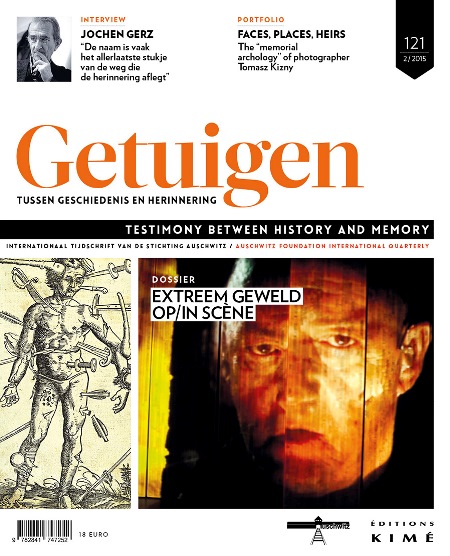
Extreme violence on stage
Extreme violence shows itself. It bursts through the screens. It surfs from one style and medium to another: news reports, documentaries, fiction, arts of all kinds. Yet theatre distinguishes itself from this mêlée all while constantly returning to the subject. Differently. Linked from its origins to the representation of cruelty and having “miraculously” escaped the often sterile polemics on the interdiction (or not)... of representing the Holocaust, it is still with the same youthfulness that theatre deals with extreme violence today, relentlessly pursuing the articulation of ethics and aesthetics.
No. 120 (04/2015) What future is there for the memory of the Armenian genocide?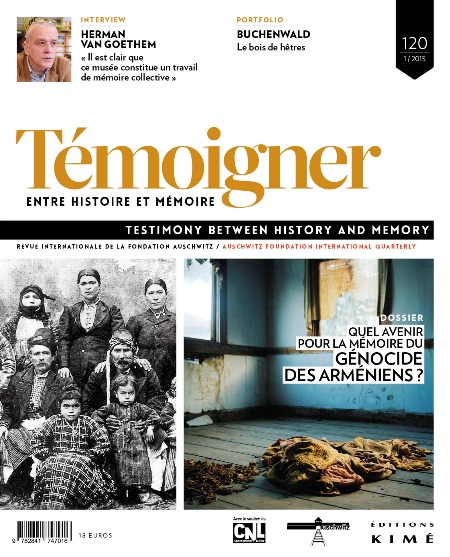
What future is there for the memory of the Armenian genocide?
The 1915 genocide of Turkish Armenians still stirs up numerous debates, controversies, declarations of principle, statements and counter-statements, and even negation. However, as we speak, ties are being established more and more openly, bridges are built and bonds strengthened between the Armenian and Turkish communities. Is reconciliation possible?
No. 119 (12/2014) 70 years ago, Auschwitz. Looking back on Primo Levi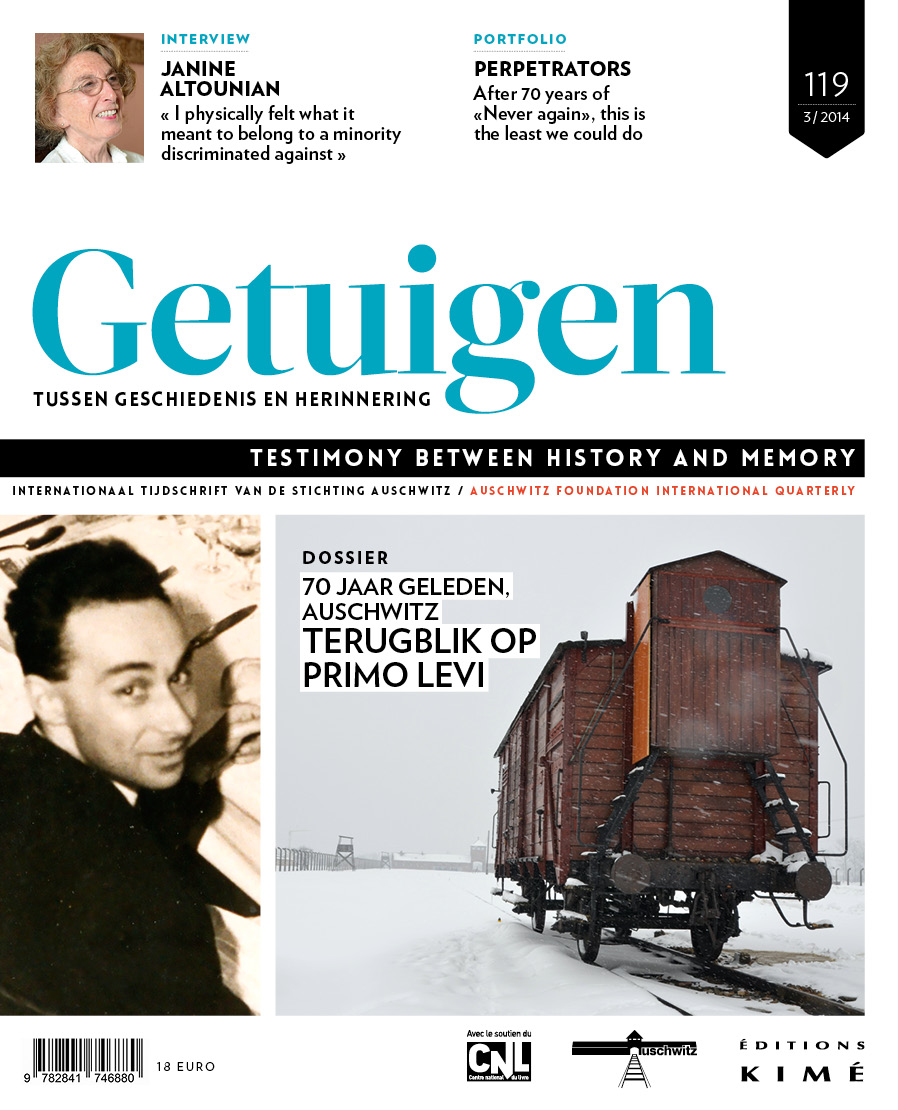
70 years ago, Auschwitz. Looking back on Primo Levi
27 January 1945. Seventy years ago the first soldiers of the Red Army marched into Auschwitz. One might argue that the camp was “liberated” then, but the truth is that neither Auschwitz, nor any of the other Nazi camps, was ever a priority to the Allied Powers. Primo Levi was one of the few survivors who knew how to hide and escape the enforced evacuation of the camps. With this dossier, we want to cast light on the complex figure that Levi was: a Jew, a deportee, a chemists, a witness, and a writer. It sets out to study his oeuvre and his interpretation of the notions of “resistance” and “engagement”, in order to understand how he eventually became a “professional survivor”, as he once described himself.
No. 118 (09/2014) Dictatorship and terror in Argentina, Chile and Uruguay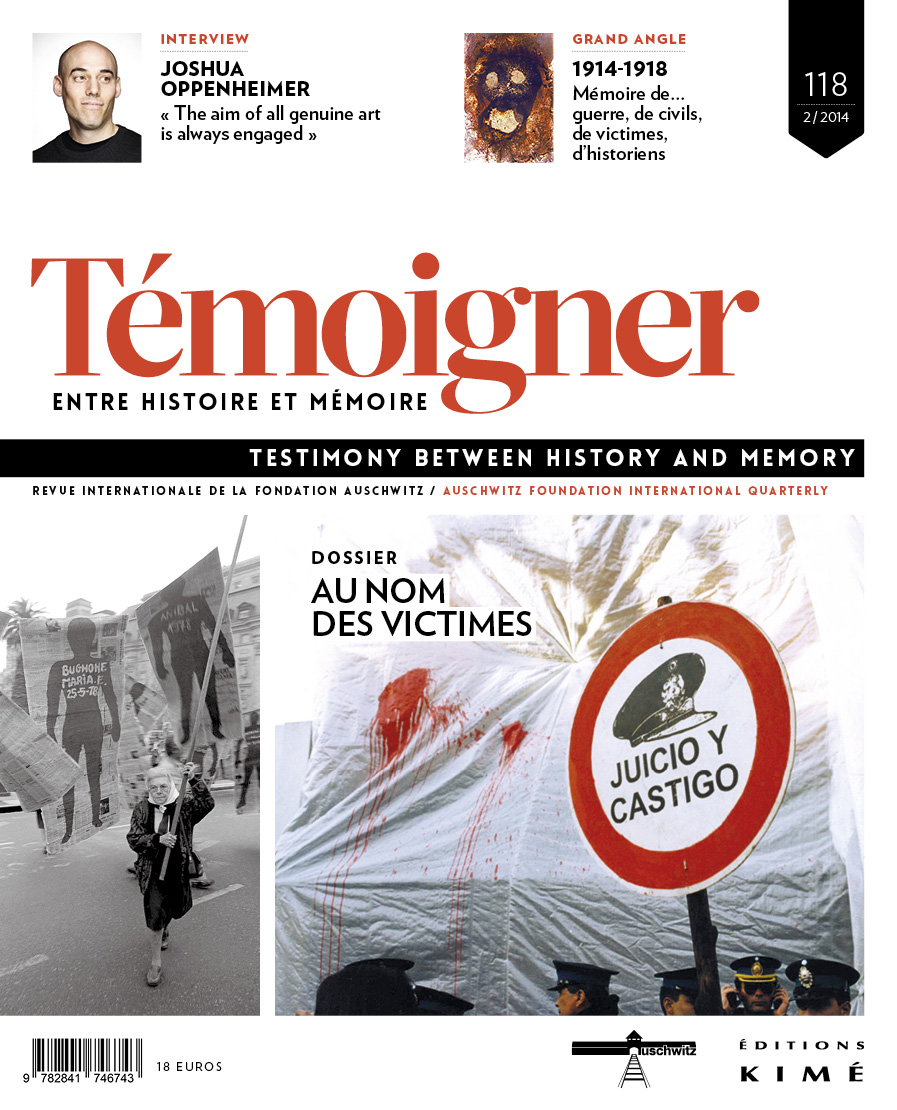
In the name of the victims. Dictatorship and State terror in Argentina, Chile and Uruguay
During the 1970s and 1980s, Argentina, Chile and Uruguay were in the grip of military dictatorships. The process of democratic transition that followed the long period of state terror involved the construction of particular narratives and memories, leading to a reconfiguration of the past. Despite local differences, this process is very much centered at the figure of the victim – a figure the articles in this dossier, collected by Claudia Feld, Luciana Messina and Nadia Tahir, set out to explore.
No. 117 (03/2014) Friends? Enemies? Relationships between memoriesAmis ? Ennemis ? Relations entre mémoires / Vriend of vijand? Hoe herinneringen zich tot elkaar verhouden [Friends? Enemies? Relationships between memories]
Much has been said and written about group memories, limiting their mutual relationships and history to conflicts, “wars”, competitions, or strategies for eclipsing or silencing. These terms have now become the platitudes of a kind of more general doxa about collective and cultural remembrance. This dossier proposes a critical reading of those terms and of that doxa by questioning the emergence, constitution, and inter-relating of different exemplary memories of the major violent episodes of the 20th century. It will address the relationships that those memories can maintain with other memories with which they share, if not the same event, at least similar characteristics and concerns.
No. 116 (09/2013) Memory tripsVoyages mémoriels / Herdenkingsreizen [Memory trips]
Should we fear what has been grouped under the term “memorial tourism”? Or should we take this as a reality of our time? Can any visitor, group or individual, nowadays be absorbed in the category of “tourist”? Or is this category a remote intellectual reduction of a personal experience that everyone is aiming during his visit? The problem appears in a somewhat different light when we think of tours for young people supervised by adults, usually teachers. This dossier gives the floor to historians and teachers with experience in the field.
No. 115 (03/2013) Memory construction in SpainL’Espagne en construction mémorielle / Spanje en de opbouw van de gedachtenis [Memory construction in Spain]
This dossier’s objective is to provide a benchmark for understanding the plural identities and relationships between memories and representation forms in contemporary Spain. Indeed, it is necessary today to take a fresh look not only on the stratified memories of the civil war, exile and the Franco repression, but also on the reception of other memories such as that of the Holocaust, and to propose new readings. We propose to highlight the conflicting or fruitful tensions between official actions, initiatives of associations and of artistic events.
No. 114 (12/2012) Memorial SitesSites mémoriels / Gedenkplaatsen [Memorial Sites]
Memorial sites constitute the concrete trace of European remembrance and history of the twentieth century. But what do they look like today? Exhibition and conservation criteria have changed during the last ten to fifteen years, like advances in historical research have changed the way we read and reconstruct past events. This is not only due to the fact that we have moved from a past history written by witnesses to a history written by professional historians. A new consciousness has emerged concerning transmission methods (memory education), and archeology has strengthened historical research. We tore off the veil of ideology that often influenced and prescribed the way we imagined permanent exhibitions, conservation and visits. Can we say we have entered a new era in memory transmission? It remains, in many ways, an open bet on the present and the future.
No. 113 (09/2012) The Taboos of German HistoryLes tabous de l'histoire allemande / De taboes van de Duitse geschiedenis The Taboos of German History]
The most painful or ambiguous periods in twentieth-century German history are characterized by numerous taboos, expressed in literature, photography and film as so many “returns of the repressed”. These studies focus in part on problems of antisemitism, and thus on the relationship of German-speaking societies to the Shoah. They also examine the way in which those societies confronted the violence they suffered, such as bombing, fleeing from the Red Army and the expulsions, and mass rapes.
No. 112 (06/2012) Children of the Spanish Civil WarLes enfants de la Guerre d'Espagne. Expériences et représentations culturelles / De kinderen van de Spaanse Burgeroorlog. Ervaringen en culturele voorstellingen [Children of the Spanish Civil War: Experiences and Cultural Representations]
The dossier in this issue deals with the experiences and cultural representations of childhood during the Spanish Civil War. It aims to help towards a better understanding of that conflict, which tore apart a population living on the same territory, by confronting the experiences of Spanish children who lived through it – as expressed in various forms during or after the war – with representations of those same children, particularly those coming from adults.
No. 111 (12/ 2011) Dangerous Game between Art and PropagandaArt & propagande : jeux inter-dits / Gevaarlijk spel tussen kunst en propaganda [Dangerous Game between Art and Propaganda]
Since the media came into existence, political institutions from political parties to governments have used them to promote their image, in order to win the support of the public they addressed. Authoritarian powers use the media as a means of consolidating their domination. But how can artists take part in propaganda, whose purposes are the opposite of those generally attributed to art? Does that mean setting aside their vocation, or do they themselves distort that vocation?
No. 110 (10/2011) Displacements, Deportations, ExileDéplacements, déportations, exils / Volksverhuizingen, deportaties, verbanningen [Displacements, Deportations, Exile]
States and criminal groups exploit population displacements to isolate or get rid of certain populations. In addition to being denied their normal rights, these populations lose visibility and are deprived of their reference points and social frameworks. In this way it is possible to make them the victims of constraints (deterritorialization, forced labor…) or violence (famine, massacres genocide…). These developments have spread on an unprecedented scale since the First World War and continue to grow worldwide. But there is also a dimension of remembrance to this reality: memories of these displacements are now being expressed in literature, and in exhibitions and museums. This dossier examines the contemporary double aspect of history and memory.
No. 109 (03/ 2011) 20th Century Wars and Genocides in Graphic Novels and Comic StripsLa bande dessinée dans l'orbe des guerres et des génocides du XXe siècle / Twintigste-eeuwse oorlogen en genociden in het stripverhaal [Twentieth Century Wars and Genocides as Portrayed in Graphic Novels and Comic Strips]
No. 108 (09/2010) How Documentaries Handle HistoryLe traitement de l'histoire dans les documentaires filmiques / De behandeling van de geschiedenis in de documentaire film [How Documentaries Handle History]
No. 104 (09/2009) Anti-fascism Revisited: History, Ideology, RemembranceL'Antifascisme revisité. Histoire – Idéologie – Mémoire / Nogmaals antifascisme. Geschiedenis, ideologie, gedachtenis [Anti-fascism Revisited: History, Ideology, Remembrance]
No. 103 (06/ 2009) Nazi Crimes and Genocides on the ScreenCrimes et génocides nazis à l'écran / Nazimisdaden en genociden op het scherm [Nazi Crimes and Genocides on the Screen]
No. 102 (03/ 2009) The Portrayal of Political Criminals in Films, Plays, Literature...Criminels politiques en représentation. Arts, cinéma, théâtre, littérature, médias / De representatie van politieke misdadigers. Kunst, film, theater, literatuur, media [The Portrayal of Political Criminals in Films and Plays, in Literature and in the Media]
No. 101 (12/2008) How to Educate, How to Remember?Quelle pédagogie, pour quelle(s) mémoire(s) ? / Welke pedagogie, voor welke herinnering(en)? [How to Educate, How to Remember?]
No. 100 (09/2008) Questions about the “Executioners”Questions de « bourreaux » / De kwestie van de “beul” [Questions about the “Executioners”]
Contact
Auschwitz Foundation – Remembrance of Auschwitz
Rue aux Laines 17 box 50 – B-1000 Brussels +32 (0)2 512 79 98
+32 (0)2 512 79 98 info@auschwitz.be
info@auschwitz.be
BCE/KBO Auschwitz Foundation: 0876787354
BCE/KBO Remembrance of Auschwitz: 0420667323
Office open from Monday to Friday 9:30am to 4:30pm.
Visit only by appointment.![]()
![]()
![]()
![]()
Become a member
To become a member of Remembrance of Auschwitz ASBL, take part in its activities and support its actions, please contact us.
Membership costs €40.00, payable to account n° 310-0780517-44 (IBAN : BE55 3100 7805 1744 – BIC : BBRUBEBB)
Donations of more than €40.00 qualify for a tax exemption for Belgian tax-payers.








































